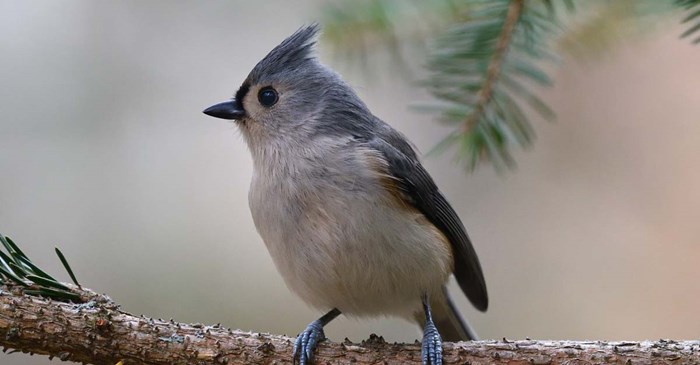As it turns out, birds see the world differently than we do. One important reason is their ability to perceive ultraviolet wavelengths.
To get a feel for the ins and outs of avian vision, it can help to compare it to something familiar: human vision.
How can birds see ultraviolet wavelengths?
In the human retina, there are three color receptors or cone cells. These cone cells pick up colors in the red, blue, and green spectrum. Because of this, human vision is described as trichromatic. (If you’re familiar with color blindness, the cause is usually a missing or weakened cone cell, usually red or green.)
Birds also have color receptors in the retina, but instead of three cone cells, they possess four. That means birds have tetrachromatic vision. In addition to blue, green, and red cone cells, they have a fourth cone cell that sees wavelengths in the ultraviolet range.
As you can imagine, this extra filter brings a whole new dimension to the bird world, and it’s pretty fascinating.
Now that we know what makes bird vision different from a human’s, we’ll explore how birds put it to use.
How does seeing in the ultraviolet wavelength help birds?
Scientists have many theories, including that their vision helps birds:
Detect showier plumage
UV rays give some birds showier plumage.
As a rule, male birds tend to be colorful and flashy while females are plainer with more subdued, camouflaging features. Despite that, in plenty of songbird species, males and females look identical and are impossible to tell apart. Or so we thought, in our human-centric mindsets.
In many lookalike species, it turns out that the male gets to strut his stuff after all, because he actually has UV reflective feathers. This gives him a “pop” of color that is visible to birds, but not humans (and predators).
What do birds look like through a UV-enhanced lens? The male American Robin sports a deep purple breast instead of the familiar rusty orange and the European Starling is transformed into a dazzling artist’s fantasy, dressed in bold colors and metallic glints.
Guard nests against parasitic species
Some eggs of songbird species also reflect UV light. Scientists believe this helps them identify eggs from parasitic species (Cowbirds and cuckoos). These birds can then remove the parasite egg, and preserve resources for their own brood.
Forage
Scientists also found that the ability to detect UV waves adds contrast to leaves' appearance. This makes foliage look more distinct, which can help birds navigate through the treetops and forage for insects and spiders.
Understanding how birds live and thrive in challenging conditions can make you appreciate your backyard visitors even more. Keep your feeders filled with a high-quality mix of seeds, nuts and fruit, and enjoy the intricacies of nature. Lyric Fruit & Nut High Energy Mix features a gourmet blend of fruit, seeds and nuts that attracts orioles, buntings, grosbeaks and other colorful birds.
